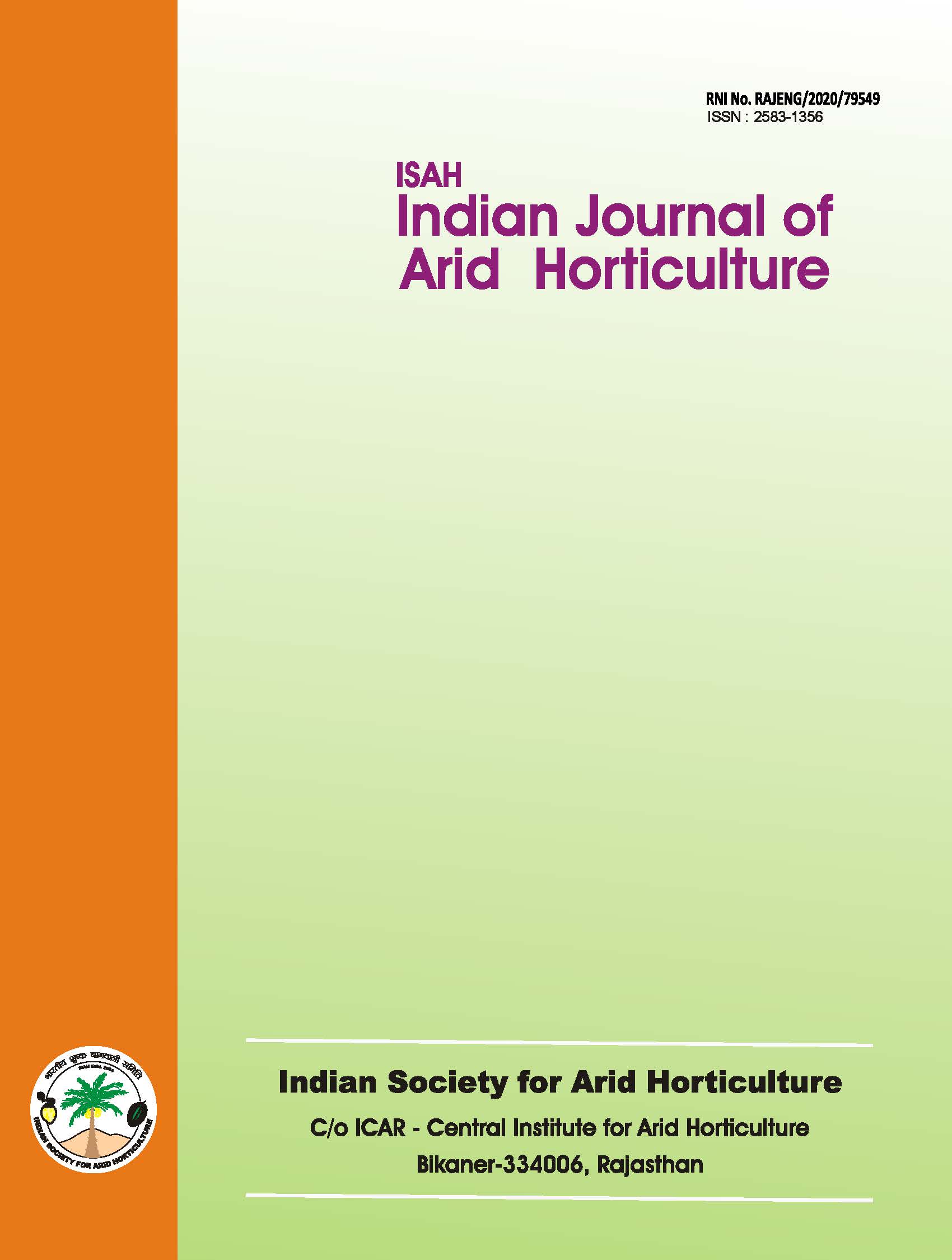Distribution of micronutrient cataions in arid irrigated ber orchards in Sikar district of Rajasthan
Keywords:
Rajasthan,, desertAbstract
In Rajasthan, fruit cultivation is practised over an area 19795 ha and total production is 238475 tonnes (Anonymous 2005). The area of Sikar district forms a part of Thar desert which covers an area of 774244 square kilometres situated in the North Eastern Rajasthan. The district has moderate climate with seasonal temperature variation with scanty rainfall to the magnitude of 450-500 mm per annum during normal rainfall years. Increasing the production of fruits thus has sufficient scope in arid region of Rajasthan. In Sikar district, the area under fruit crops is 200 ha with production of 0.02 lakh metric tonnes. (Anonymous 2005). There is a vast potential of increasing area under fruit cultivation in arid region of Rajasthan provided irrigation facilities are available. These areas are suitable for cultivation of fruit crops such as aonla, ber, beal citrus, pomegranate etc. Presently Sikar district has nearly 2,12,096 lac hectares irrigated area through tube wells/wells. Irrigation facilities has opened great avenues for cultivation of fruit crops likes ber, aonla, bael, lime, pomegranate, datepalm, guava, jamun, karonda, phalsa etc, besides traditionally grown fruits such as Ker (Capparis decidua), Gonda (Cordia myxa), Pilu (Salvadora oleiodes), Khejri (Prosopis cineraria) etc. Ber is an important fruit crop of arid and semi arid regions of north india. It can be successfully grown even on the marginal land where the most of the other fruit crops fail to give best economic returns. In Indian fruit industry, poor nutrition is the major cause of low orchard efficiency resulting poor productivity and poor fruit quality. Balanced nutrition of fruit crops is paramount importance particularly in arid areas having largely sandy soils of poor fertility status. For knowing the exact status of mineral nutrition in the fruit trees, survey of the orchards for their fertility status is done.Downloads
References
Anonymous. 2005. Horticultural Data Base. National Horticultural Board, Ministry of Agriculture, Govt. of India.
Baser, B.L. and Lodha, P.S. 1971. Available micronutrients in sandy soils of Rajasthan. Annals Arid Zone, 10: 93-94.
Bhatnagar, P. and Chandra, A. 2003. Distribution of micronutrient cations in arid irrigated orchard soil profiles of western Rajasthan. Journal of Eco-physiology, 6(3-4): 93-100.
Kumawat, R. 2005. Nutrient status of soils of ber (Ziziphus mauratina L.) orchard in Jaipur district of Rajasthan. M.Sc. Thesis, RAU, Bikaner.
Lal, F. and Biswas, T. D. 1973. Factors affecting the distribution and availability of micronutrient elements in major groups of Rajasthan surface soils. Journal of Indian Society of Soil Science, 21(4): 455-466.
Lindsay, W.L. and Norvell, W.A. 1978. Development of DTPA soil test for zinc, manganese, and copper. Soil Sci. Soc. Am. J., 42: 421-428.
Tandon, H.L.S. 1992a. Fertilizer Development and Consultation Organization, A Bhanot Corner, 1-2 Pompers Enclave, New Delhi. p 202-204.

